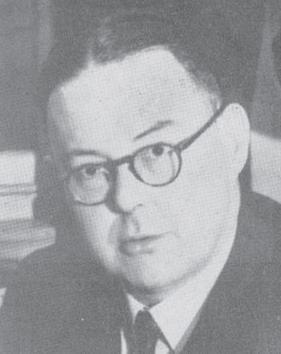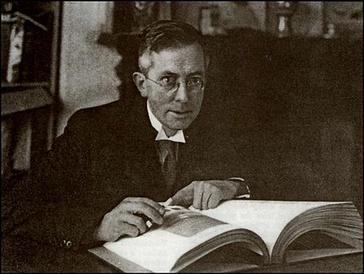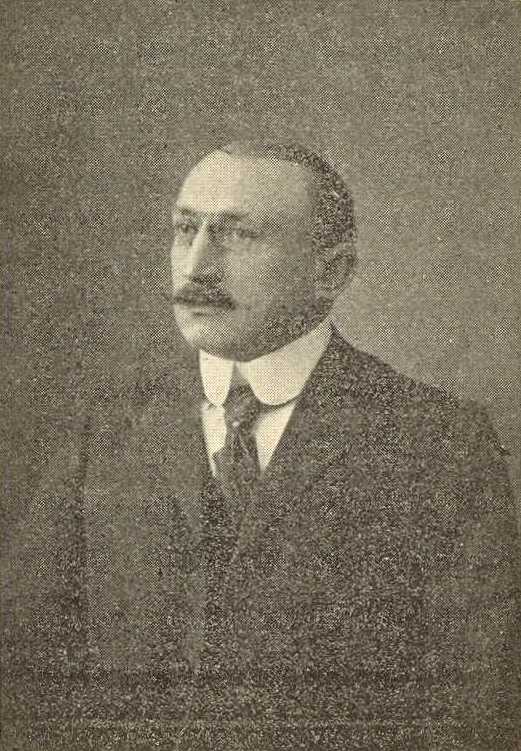There is this very popular saying in Hindi: जब भगवन देता है चपड़ फाड् कर देता है।
This literally translates as, “When God gives, he tears down the roof and gives.” The implied meaning is that when good things have to happen, they often happen together in quick succession (Of course it applies equally to the not-so-good stuff in life as well!)
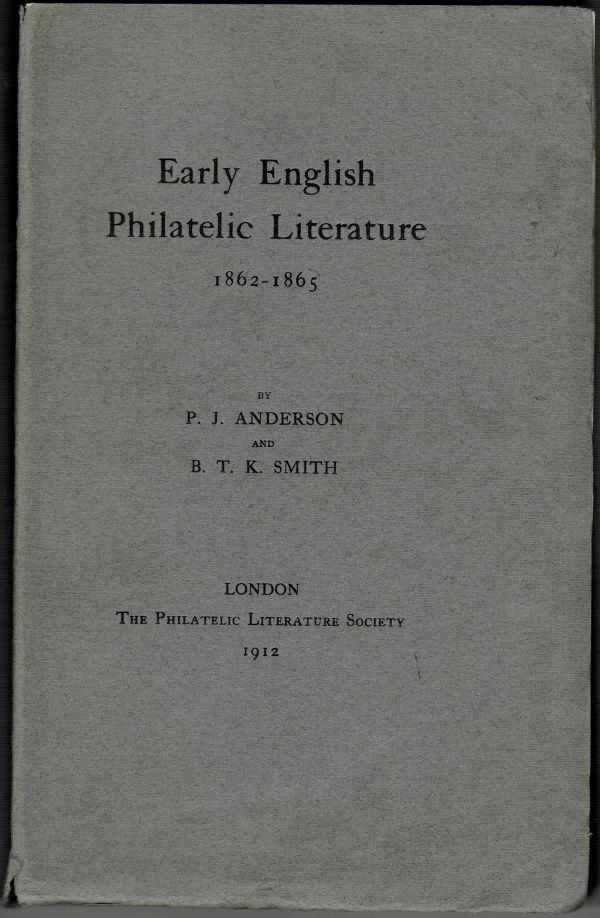
I have faced many such ‘When God gives…’ situations in my philatelic literature collecting journey. Books, which I have been searching for years to no avail, suddenly become available, well not in hordes, but in multiple copies. Given that most philatelic literature titles are scarce and the most popular and in-demand ones are rare to very rare, we surely cannot expect hordes.
I had been searching for one such extremely collectable book, Early English Philatelic Literature by P. J. Anderson and B. T. K. Smith (Figure 1), for many years. As die-hard bibliophiles will know, this is one of the most important works of philatelic bibliography ever written, perhaps only next to the great Crawford Catalogue. Further given that it is a work published by The Philatelic Literature Society, a society consisting of the giants of philatelic literature collecting and inquiry, makes it extremely collectable. Finally with just 125 copies* published, it is not a common title with just 15 unnumbered and 30 numbered copies identified as existing by Brian Birch in his magnum-opus The Philatelic Bibliophile’s Companion (available on Global Philatelic Library)
* While an earlier notice in The Journal of the Philatelic Literature Society mentions that the book will be a run of 120 copies, a later notice in the same journal says 125 copies were printed of which 20 were given to Mr. Anderson and 5 to Mr. Smith. I would assume that they were all unnumbered. In case you are wondering why unnumbered copies exist, you can read my articles on The Philatelic Literature Society and its publications. Briefly it is because this publication was printed only for members and their number in 1912-end were 79; hence apart from Anderson and Smith’s copies, which would probably have been unnumbered, other unnumbered surplus copies exist.
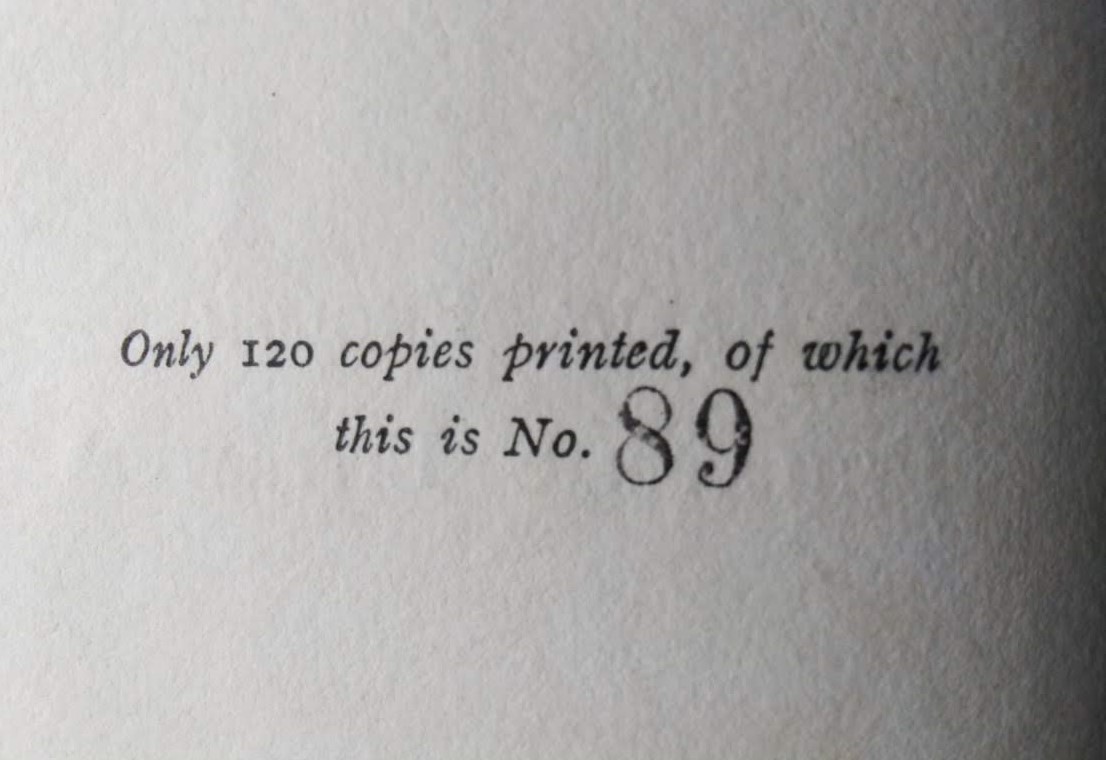
Now coming back to my story. In late 2018 I acquired a copy from, very surprisingly, an Indian dealer (Figures 2, 3, and 4). I would have never expected a copy to be lurking around in this country. The dealer informs me that the copy came in a lot which he had purchased years ago from England. There exists a small sticker of the bookbinder Higginbotham & Co., who were (still are but under an Indian management) one of India’s most well-known general books dealer with shops in Madras and Bangalore. This implies that one of the previous owners was an Englishman (there exists his signature on the title page, scroll down) stationed in India, maybe even born there.
That copy is numbered 89/120 (Figure 2) and is bound; thankfully the covers are still intact and the deckled edges have not been trimmed.
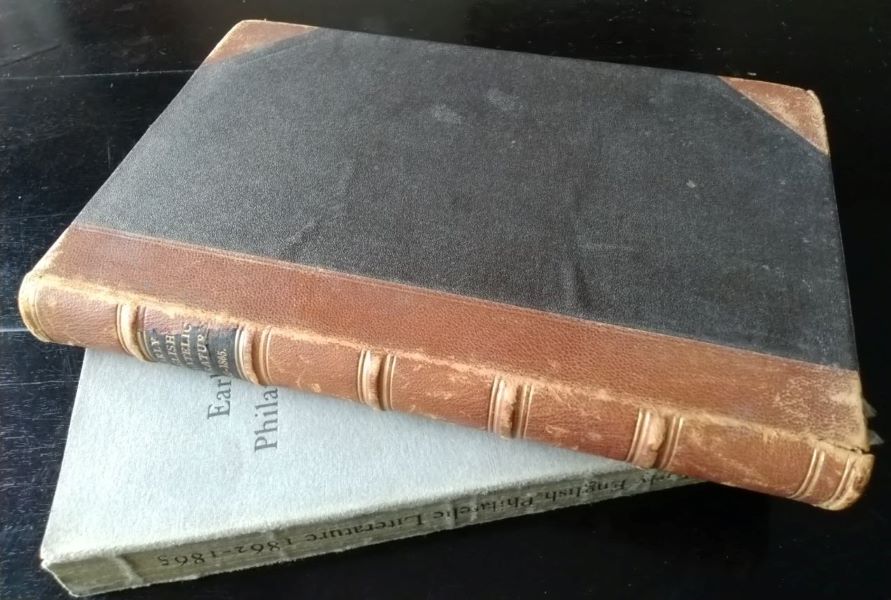
Last last month I bought a copy from another unlikely source, a US non-philatelic eBayer; this arrived in my hands today. The copy is unnumbered (Figures 3, 4, and 5) and is in the same unbound uncut state (deckled edges and oversized card covers) in which it was published in 1912. How very rare and how very exciting!
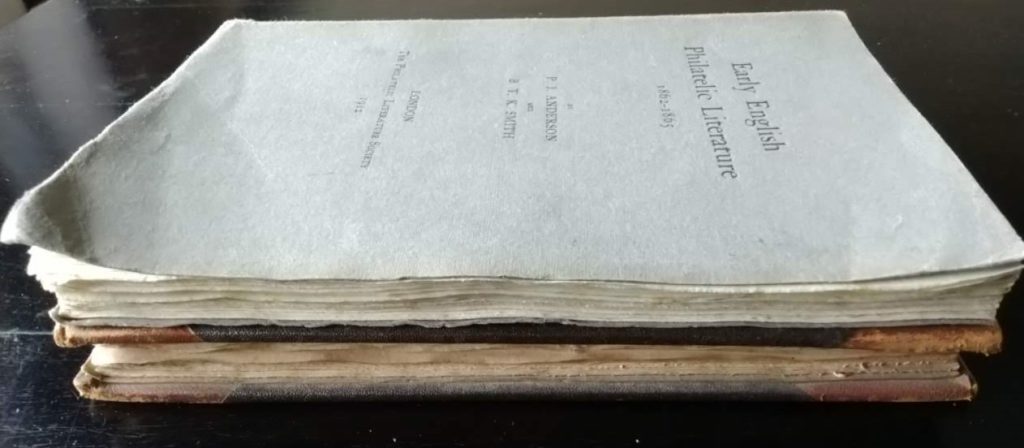

So the number of known copies of this book has now increased from 45 to 47! I would think that my contribution to the 4.4% jump is pretty respectable!
I am right now so very excited with my latest acquisition that I think I will sleep tonight hugging the book! On second thoughts, that would not be good for the book; let me rephrase and say that I will sleep with the book on the side table next to me.
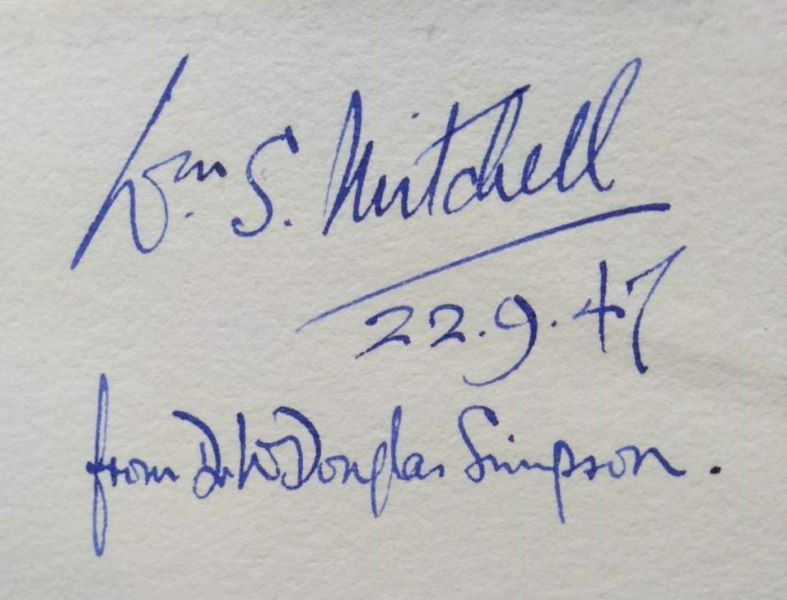
On the half title page are inscribed the presenter and the presentee? Can someone identify who they are? I can read “W. S. Mitchell” and “D. (or Dr) W. Douglas Simpson” respectively (Figure 6). Please do contact me if you have any information on these two gentlemen.
Update on 15 Aug 2019: When my blog went online last night, Casper Pottle of HH Sales immediately reverted back on my query. Dr. William Douglas Simpson was librarian at Aberdeen University Library for 40 years and William Smith Mitchell was the author of Catalogue of The Incunabula in Aberdeen University Library and A History of Scottish Bookbinding 1432 to 1650 both published by Aberdeen University. If one also considers that one of the co-authors, P. J. Anderson, was also a past librarian of the University and had bequeathed all his books to it, they all form a nice common connection.
So my next query: the bound copy has the following signature. Can anyone identify it for me? As mentioned above, it could be some Englishman stationed in India.
Update on 15 Aug 2019: Casper has once again identified the signature. He thinks it is probably of H.F. Murland (Figure 7). Murland was a Lieutenant-Colonel in the 2nd Battalion, Madras Pioneers (and wrote their Battalion history). He would have been stationed in Madras and that ties in with the binding details. Capt. H.F. Murland is listed as a member of The Royal Philatelic Society in 1917-18.




